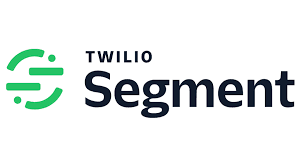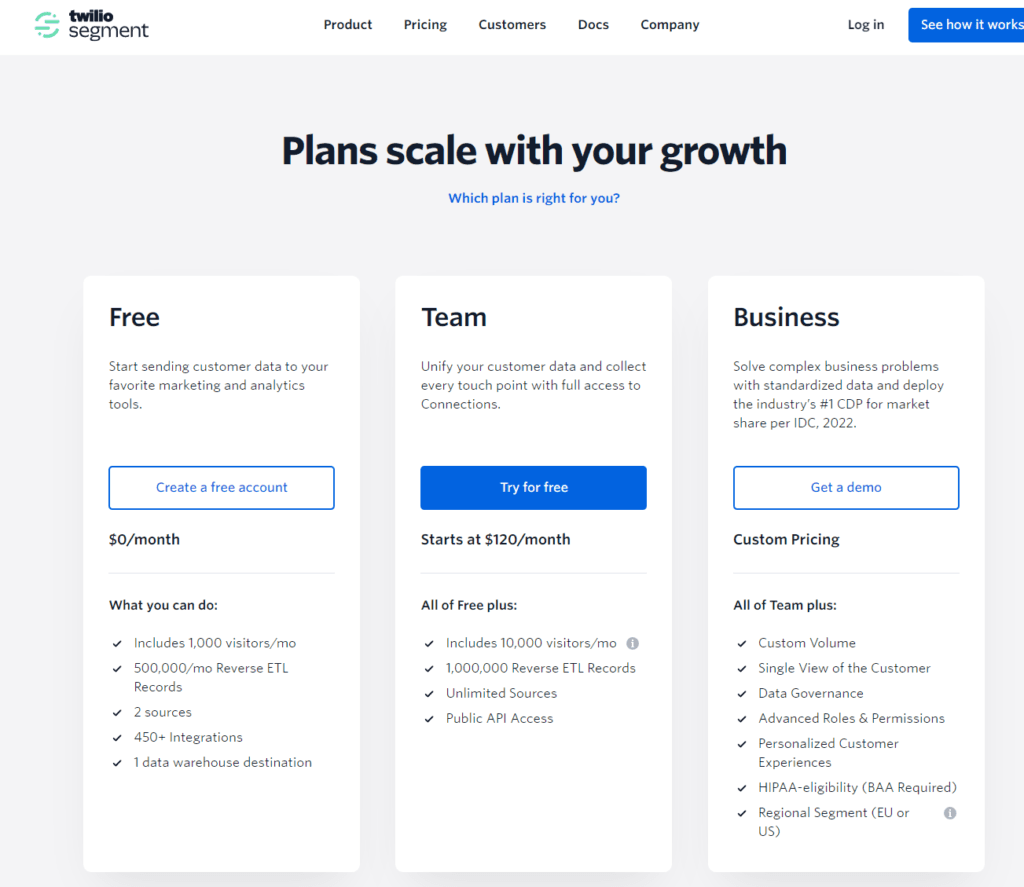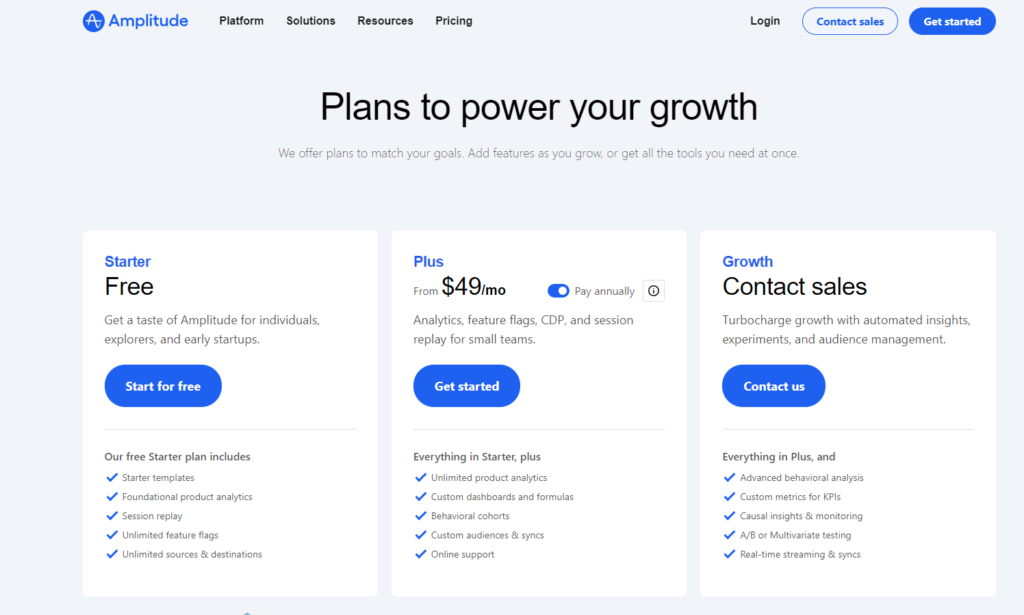In today’s data-driven world, the quest to harness the power of analytics for strategic advantage has led businesses on a search for the perfect tool. Two standout contenders in this search are Segment and Amplitude, each offering unique capabilities to unlock the stories hidden within your data. But with different strengths and focuses, how do you choose the right partner for your journey into analytics? Whether you’re a startup looking to understand user engagement or an enterprise aiming to refine your product experience, making the right choice between Segment and Amplitude could be the key to unlocking your business’s potential. Let’s embark on this exploration, starting with a critical comparison point: Integration Capabilities.
Segment | Amplitude |
|---|---|
| G2 Score – 4.6 out of 5 stars | G2 Score – 4.5 out of 5 stars |
| TrustRadius Score – 8.3/10 | TrustRadius Score – 8.3/10 |
Integration Capabilities
In the realm of analytics, the ability of a tool to seamlessly integrate with your existing tech stack is not just a convenience—it’s a cornerstone for building a comprehensive and actionable understanding of your data. Here’s how Segment and Amplitude fare in enabling businesses to consolidate and analyze data across various platforms.
Segment:
Designed as a customer data platform, Segment excels in its integration capabilities. Its primary function is to act as a data hub, collecting information from multiple sources, standardizing it, and then routing it to over 300 different tools for analytics, marketing, and data warehousing purposes. This makes Segment incredibly powerful for businesses looking to streamline their data infrastructure and ensure consistent data flow across their entire tech stack. The breadth of Segment’s integrations means it can fit into almost any digital ecosystem, making it an invaluable asset for companies that rely on a diverse set of applications to run their operations.
Amplitude:
While Amplitude focuses more on being an end-to-end analytics platform, it also offers robust integration capabilities, especially for analytics and product data analysis. Amplitude specializes in analyzing user behavior and product interaction, providing deep insights into how users engage with your digital products. Its integrations are tailored to enrich this analysis, connecting with tools that enhance data collection and visualization, such as marketing platforms, A/B testing tools, and data warehouses. While it may not match the sheer volume of integrations that Segment offers, Amplitude ensures that the integrations it does provide are deeply aligned with its core analytics functions, offering seamless connections that empower businesses to drive product and marketing strategies.
User Behavior Insights
Understanding user behavior is essential for businesses aiming to optimize product offerings, enhance user experience, and drive engagement. Both Segment and Amplitude provide capabilities to delve into user actions, but they approach this task from different angles, each with its own set of strengths.
Segment:
Segment primarily functions as a data infrastructure tool, focusing on the accurate collection and routing of user data to other platforms where deep analysis can occur. While Segment itself does not directly offer analytics on user behavior, its power lies in its ability to ensure that the data feeding into your analytics tools is comprehensive, consistent, and clean. This means businesses can rely on the insights generated by their analytics platforms, knowing the underlying data is accurately captured by Segment. For organizations that already have a preferred analytics tool but struggle with data silos and inconsistencies, Segment provides the foundation for reliable user behavior analysis.
Amplitude:
Amplitude, in contrast, specializes in offering direct insights into user behavior through its platform. It allows businesses to track a wide range of user actions, analyze paths through products, and segment users based on their behavior. Amplitude’s strength is its focus on delivering actionable insights that can inform product development, marketing strategies, and customer engagement initiatives. With its built-in analytics capabilities, businesses can quickly understand how users interact with their products and identify opportunities for improvement or innovation. Amplitude is designed for those who want to dive deep into user behavior analysis without the need for integrating multiple tools.

Related: Check out our free SEO suite

Ease of Use and Learning Curve
The accessibility of a platform and the time investment required to become proficient can significantly influence its adoption and the speed at which insights can be generated and acted upon. The Ease of Use of an analytics tool is not just about having a friendly user interface; it encompasses the overall experience of setting up, integrating data sources, creating analyses, and sharing insights. A steep Learning Curve can be a barrier to rapid deployment and can limit the tool’s use to a small set of power users within an organization.
Segment:
Segment’s platform, designed primarily as a data infrastructure tool, offers a robust solution for data collection, integration, and management. While it provides a central hub for all your customer data, navigating its capabilities to set up and manage data flows efficiently can require a good grasp of technical concepts related to data schemas and APIs. For businesses with dedicated data or development teams, Segment’s complexity is offset by its powerful flexibility and the depth of integration it supports. However, for smaller teams or those without technical expertise, the initial setup and ongoing management might present challenges.
Amplitude:
Amplitude, focusing on analytics and user behavior insights, is tailored to offer a more intuitive experience. From the moment you log in, Amplitude is geared towards providing actionable insights with minimal setup. Its interface is designed to guide users through the process of tracking events, analyzing user paths, and segmenting audiences with a more straightforward approach. This accessibility makes Amplitude appealing to a broader range of users, from product managers to marketing teams, enabling them to quickly derive value without extensive technical training. The platform balances depth of analysis with ease of use, aiming to democratize access to data insights across the organization.
Customization and Flexibility
In an era where businesses face rapidly changing markets and consumer behaviors, the ability to tailor an analytics solution to specific needs and adapt over time is invaluable. Customization refers to the tool’s capability to be modified according to the unique requirements of a business, including specific data collection needs, bespoke analysis, and personalized reporting. Flexibility, meanwhile, encompasses the tool’s adaptability to evolving business strategies, changing technology landscapes, and emerging data sources.
Segment:
Segment’s platform is inherently designed around the concept of flexibility and customization. Its primary role as a data infrastructure tool means it excels in collecting data from a myriad of sources and routing it precisely where it needs to go, according to custom rules and setups defined by the user. This allows businesses to tailor their data collection and integration processes to match their specific operational and analytical needs closely. Additionally, Segment’s architecture supports scalability and evolution, enabling organizations to adjust their data strategies as they grow and as their needs become more complex.
Flexibility in Segment also shines through its ability to integrate with emerging tools and platforms swiftly. As the digital ecosystem expands, businesses often experiment with new software solutions to stay competitive. Segment’s platform is designed to easily incorporate new data sources and destinations, ensuring that a business’s data infrastructure remains cohesive and forward-looking, ready to embrace innovative tools that offer competitive advantages.
Amplitude:
Amplitude, focusing on providing in-depth analytics, particularly around user behavior and product interaction, offers a different kind of customization and flexibility. The platform allows users to customize the events and actions they track, create specific user segments, and build personalized dashboards and reports that match their analytical objectives. While perhaps not as flexible as Segment in terms of data infrastructure customization, Amplitude offers significant adaptability within the analytics sphere, ensuring businesses can evolve their analysis and reporting as their understanding of user behavior deepens or as their product offerings expand.
Flexibility in Amplitude is evident in its adaptive reporting features, which cater to the dynamic nature of business questions and goals. As new priorities emerge, be they around user retention, funnel optimization, or feature adoption, Amplitude enables users to quickly adjust their analysis and reporting frameworks to focus on these new objectives. This agility ensures that insights remain relevant and actionable, empowering businesses to pivot their strategies in response to real-time data.
Pricing
The investment in an analytics solution goes beyond its sticker price, encompassing the tool’s potential to drive actionable insights, improve decision-making, and ultimately contribute to the bottom line. When evaluating Pricing and Value Proposition, understanding the cost structure of each tool and balancing it against the benefits it offers is crucial for making an informed decision that aligns with your budget and analytics objectives.
Segment:

Segment operates on a tiered pricing model that scales with the volume of data you’re managing and the complexity of your integration needs. Its pricing begins with a free tier, suitable for smaller projects or businesses just starting to organize their data strategies, and extends to custom-priced enterprise solutions designed to support large-scale, complex data ecosystems. The value proposition of Segment lies in its comprehensive approach to data integration and management.
For businesses that require a robust, flexible infrastructure to collect, clean, and route data across multiple tools and platforms, Segment promises to streamline operations, enhance data accuracy, and enable a unified analytics strategy. The investment in Segment is justified for organizations that view their data infrastructure as a critical component of their competitive strategy, needing a scalable solution that grows with their ambitions.
Amplitude:

Amplitude’s pricing model also features a free starter plan, offering access to its core analytics capabilities, with premium offerings that add more advanced features, higher data volumes, and additional customization options. The platform’s value proposition centers around its deep analytical insights into user behavior and product engagement, empowering businesses to make data-driven decisions that refine the user experience, optimize product development, and drive growth. Amplitude is particularly valuable for companies focused on maximizing the impact of their digital products, providing a suite of tools that reveal how users interact with their offerings and where opportunities for improvement lie.
Conclusion
In wrapping up our comparison between Segment and Amplitude, it’s clear that both platforms offer powerful capabilities but cater to different aspects of the data and analytics journey. Segment shines as a comprehensive data infrastructure solution, ideal for businesses looking to centralize and streamline their data collection and integration across a diverse tech stack. Its strength lies in providing the flexibility to customize data flows, ensuring seamless connectivity between various tools and platforms.
Amplitude, on the other hand, excels in delivering in-depth user behavior insights directly within its platform, offering businesses a detailed understanding of how users interact with their products. Its customization features allow for targeted analysis and reporting, making it a valuable tool for teams focused on optimizing product experience and engagement strategies.
Read Next:
- GetResponse vs Zoho Campaigns: The Best Email Marketing Tool for 2024
- AWeber vs ActiveCampaign: The Best Email Marketing Tool
- Constant Contact vs Campaigner: Best Email Marketing Tool
- GetResponse vs Omnisend: The Best Email Marketing Tool for 2024
- AWeber vs Benchmark Email: The Best Email Marketing Tool





















